Composable Commerce Components / How to Build an E-commerce System?
When it comes to Composable Commerce, you’ve likely heard the term thrown around for a while now. But while the concept of building e-commerce platforms from modular components is rather clear, not everyone knows what tools are actually available for constructing this platform.
So, let’s break down this topic into smaller components and explore the frameworks and modules worth considering when envisioning a modern e-commerce platform.
What is Composable Commerce?
Composable Commerce is an approach to building e-commerce architecture that involves combining independent modules and services (typically microservices) to create a comprehensive commerce solution based on MACH architecture & Jamstack principles*. These individual components or modules can be combined to suit individual needs, and their performance can be scaled in line with real-time requirements.
As a result, Composable Commerce allows for greater flexibility, speed, and innovation in building online platforms and adapting to the changing needs of the market and customers and accelerating time-to-market.
*What are all those acronyms?
- MACH: Short for Microservices-based, API-first, Cloud-native and Headless.
- Jamstack: A tech stack based around Javascript, API and Markup language.
Composability Meaning
“Composable” refers to the architectural approach of building smaller, independent components. In the case of composable commerce, we are talking about such composable components that relate to e-commerce, but the concept is the same.
These composable modules can take many forms, based on the functionality required. For example:
- SaaS solutions. These out-of-the-box applicated are hosted and delivered by a service provider. They typically cover key business functions.
- Microservices are independent services or functions that execute very specific tasks. Each microservice has its own codebase and API.
- Packaged Business Capabilities (PBCS). Cloud-native, packaged business capabilities are modular components of grouped microservices. While they can be uniquely created, market examples are also available for a quicker “plug and go” option.
Comparing these three forms of components, we can see that PBCs offer ready-made functionalities, microservices allow for greater customization and flexibility in system construction, and SaaS solutions are easy to use and require minimal implementation effort.

A Quick Example
Let’s consider a Loyalty Program. If we were to use an existing solution, that’s SaaS. And if we were to build it ourselves, we could develop it as a number of microservices (such as banking points, rules engines, notification and point redemption microservices) and/or then package these together as PBCs to execute together, consistently.
In any case, they remain connected to the wider structure (thanks to API – the A in both MACH and Jamstack 😉 ) but can perform and scale independently.
Composable Commerce vs Headless Commerce
Both Composable Commerce and Headless Commerce are spoken about highly – and they’re both innovative approaches – so what is the exact difference?
Headless Commerce primarily focuses on separating the frontend from the backend, enabling greater flexibility and personalization of the user interface. The headless approach lets developers can use any frontend technology to build an app, website or service, in order to create engaging and unique shopping experiences. The backend, however, can typically remain monolithic, restricting wider flexibility or longterm scalability.
Composable Commerce, on the hand, goes that step further, dividing both the backend and frontend into modular components. This modular architecture, reminiscent of building blocks, enables companies to mix and match functionalities from additional vendors. Consequently, non-standard solutions can be created and tailored to individual needs.
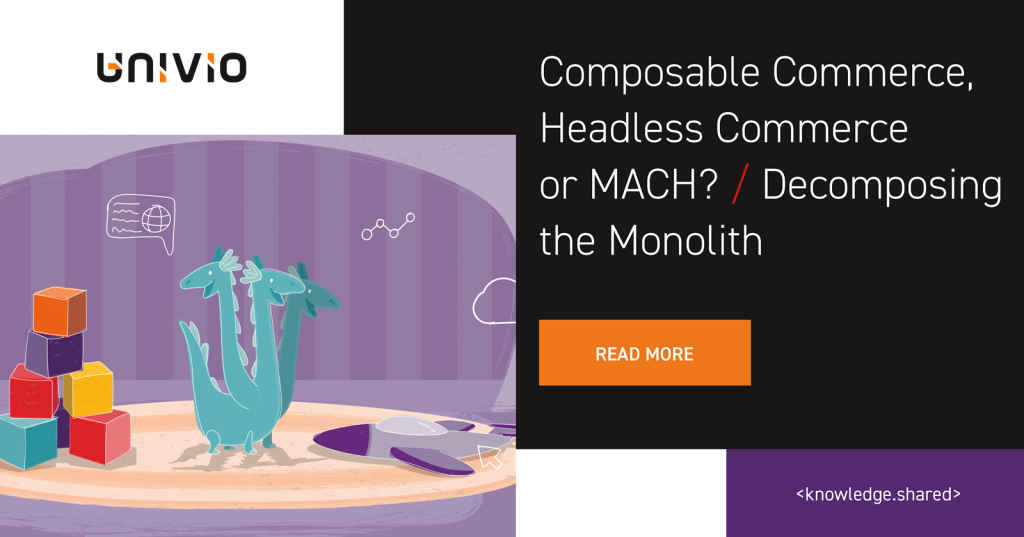
Composable Commerce Advantages and Disadvantages
Composable Commerce, just like any other architecture, has its ups and downs. While we won’t go too in-depth here, we do still want to ensure you’re aware of both sides.
Advantages of composable commerce include:
- Flexibility: Composable Commerce offers the freedom to customize e-commerce operations to unique business needs. This in turn facilities quick responses to changing markets and needs.
- Scalability: Independent modules make it easier than ever to scale e-commerce operations. Components can be added or removed as necessary, paving the way for smooth expansion without disrupting existing operations.
- Innovativeness: The modular nature of composable commerce encourages innovation, as companies can integrate and experiment with new solutions.
- Independence: Composable Commerce gives businesses the freedom to choose best-in-class components from various vendors. This way, they chose the most suitable solutions for every aspect, rather than compromising with one provider or suite of tools.
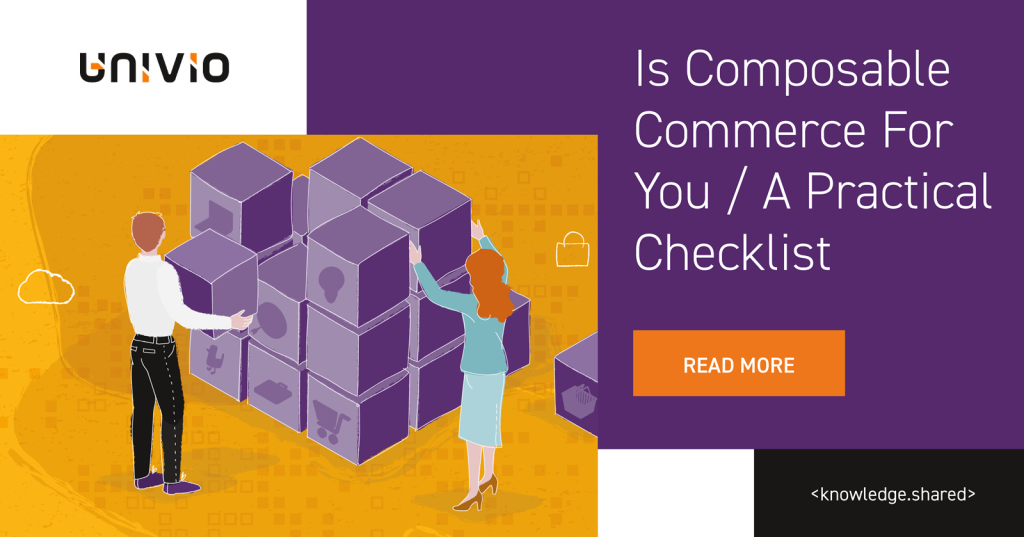
And on the downsides, for the sake of honesty, we should draw your attention to the following challenges:
- Complex architecture: Composable Commerce architecture is naturally more complex, as the burden of multiple components from different vendors is put on the business, rather than the ‘one size fits all’ approach of monolithic platforms. For companies limited in technical expertise or resources, this can be a significant hurdle.
- Integration risks: With different modules and services, it’s important to integrate correctly and avoid incompatibility issues. It’s necessary to manage the dependencies between modules on an ongoing basis.
- Ongoing costs: Implementing and maintaining an e-commerce platform based on Composable Commerce can be expensive, especially if the company relies on numerous SaaS and other costly solutions.
Composable Components for Modular Commerce Architecture
The number of components and modules that you could implement is near endless, but for this article we want to focus on the most important functionalities for e-commerce businesses.
E-commerce Platform
If your goal is to create an online store in the spirit of Composable Commerce, the first step is to choose a suitable headless platform, in which the presentation layer (frontend) will be completely separated from the business logic layer (backend). In practice, this means that the e-commerce system does not have a built-in, tightly integrated frontend, but instead provides data and functionality via APIs that can be used by various user interfaces, including websites, mobile apps, screen apps, chatbots and others.
The result is a great deal of flexibility in delivering content and services to customers. The headless commerce platform is therefore a great base not only for an online store, but also for omnichannel sales, as well as various custom applications and integrations with other systems.
The most popular solutions for headless commerce platforms include: Commercetools, Elastic Path, BigCommerce or Fabric.
Frontend Technologies
Of course, even in composable commerce, we don’t abandon the tried and tested technologies. When it comes to the frontend, we’re free to use the libraries and frameworks we need. The only difference is that, with composable commerce, we’re still very much headless, so we’re free to choose the right tools for each channel. If we need to utilize React Native for mobile, but Vue for the website’s storefront? We can do that.
To create an online store, you need an e-commerce frontend, which is the part of your website or app that is visible to customers and allows them to interact with the marketplace. In other words, it’s everything customers see and experience when they browse products, place orders, and make payments. The e-commerce frontend is responsible for the presentation of content, the user interface (UI), and handling customer interactions. When it comes to choosing the right tools for the job, you’ve got some options. Some of the top picks for e-commerce frontend frameworks include React, Angular, Vue, and Svelte.
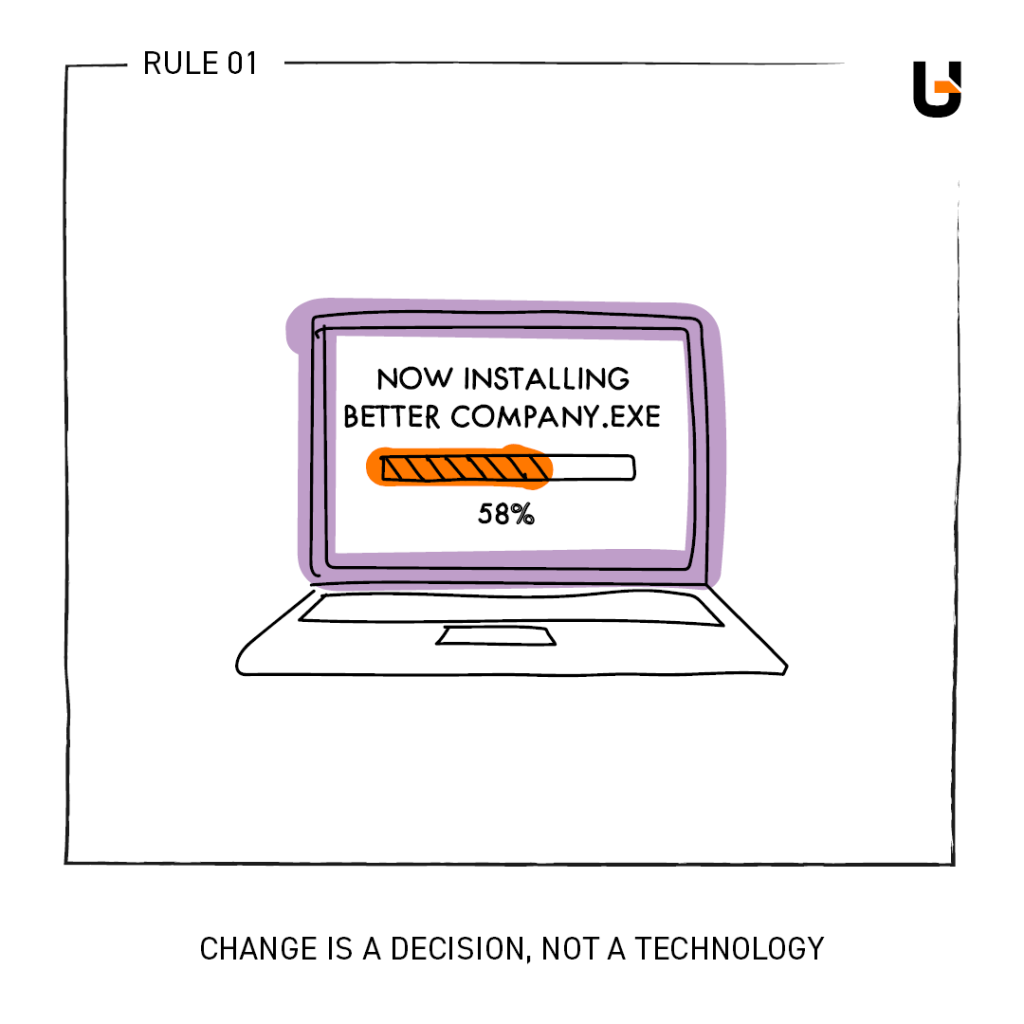
CMS – Content Management System
Most companies are familiar with Content Management Systems – they help marketing and other teams update websites, news, media and other materials. What’s more, today’s modern range of Headless CMS, such as Contentful, Dato CMS, Strapi and Kontent.ai, ensure the automated distribution of content across all channels. Sounds pretty composable already, right?
We should note that a CMS and PIM are both forms of Master Data Management. However, while you could go to great lengths to have one tool fit both needs, both tools are fully customized to work best in their respective areas. PIM tools, for example, include the various technical attributes and details that products need, which a CMS is not built to support.
They’re also often used by different teams, so this will help ensure wires don’t get crossed.
Product Catalogs
Product Information Management (PIM) is a system for collecting, storing, managing and distributing product data, with the lattermost being automated. As a headless tool, PIM works well in the Composable Commerce approach by supporting numerous sales channels. Thanks to API integration, it can also be configured to support external channels, such as marketplaces, as well.
PIM tools are already utilized in e-commerce, retail and other businesses. With a vast range of solutions on the market, such as Akeneo, Pimcore and Ergonode to name a few, they enable smaller teams to effectively manage product details, including the overall quality and experience, across all channels.

Search and Navigation
There are many modules available for helping customers search and navigate products. This includes the likes of Elasticsearch, Algolia, Apache Solr. While these tools vary, they enable customers to quickly and effectively find what they need across commerce channels.
This is a functionality that is typically included in monolithic e-commerce platforms, but the modular approach of composable commerce lets it scale in real-time, ensuring consistent, smooth experiences.
Shopping Cart and Checkout
This can include basic functionalities, such as adding and removing items, but also advanced cart management, the application of discounts and promotions, integrating with orders and collecting payments. The latter may also involve integration with additional payment modules or services.
Similar to search functions, this is another functionality typically included in e-commerce platforms. Even here, however, platforms like Shopify offer a composable component – and VueStorefront also offers a “UseCart” composable for Magento to meet this very specific need. With a fully composable approach, you’re free to choose from a wider array of options, helping ensure checkout processes are scalable, smooth and fully integrated wherever the customer may want to give you money 😉
Promotions and Loyalty Programs
The best brands offer customer loyalty programs in order to incentivize and retain long-term customers. This is best done by offering such programs across all channels for maximum consistency – something that plays into Composable Commerce’s key strengths.
If you don’t want to build a custom solution here, there are many tools on the market, such as Open Loyalty, smile.io and LoyaltyLion. These range from simple points systems to fully robust and customizable programs. They enable promotional teams to make offers, create rewards programs and smoothly integrate them across websites, apps, physical outlets and more – wherever the customer can interact with the brand.
As an added bonus, this integrated approach enables consistent data to better track the effectiveness of these initiatives.
Payment Processing / Payment Gateway Integration
We don’t need to tell you that getting paid is pretty important in the e-commerce sector 😉 There are many SaaS solutions for payment processing and handling. In addition to typical card transactions and bank transfers, there are global tools such as Stripe, unique services such as PayPal, and even gateways that integrate numerous options. For example – Przelewy24 supports a number of payment options, such as Blik, that are unique to the market.
We’ll admit, this is quite a complex area but it’s obviously a very important one!
Order Processing
After products have been added to a cart, and payments have been made, companies also need to manage the entire order process. OMS tools have existed for a long time, and they are readily available as composable commerce modules too. Tools such as Kibo, ShipBob* and IBM’s Sterling Order Management take incoming orders, integrate with warehouses, dispatch tools and other backend processes. They also keep track of the process and can update the customer in real-time.
*To be honest, we just included this one because we like the name 😊
Inventory Management
On the topic of warehouses and back office processes, we also need to talk about inventory management. With orders coming in, and goods going out, inventory management tools such as QuickBooks Commerce, Extensiv and Zoho Inventory, help keep things afloat. In addition to updating records in real time – something really important for physical outlets, too! – they can show which warehouses have which products, which goods need to be replenished and react to changes in demand to avoid shortages.
Customer Service and Support
The main priority for customer service tools, however, is to remain integrated. For your agents – and chatbots 😊 – to best solve queries, they need to be able to access relevant information from some of the previous solutions, such as inventory and order management tools.
Providing high-quality customer service and technical support isn’t just about solving problems. It’s about building trust, fostering loyalty and making sure every interaction leaves positive impression. To enhance customer communication, resolve their issues and improve the overall shopping experience you may use tools like Zendesk or Freshdesk. Both supports multiple communication channels, including email, phone, live chat, social media, and self-service portals, which means you can follow your customers through the whole journey across every touchpoint – in a good way of course.
Shipment and Fulfilment Integration
When it comes to dispatching goods to fulfil orders, companies can either use their own delivery networks or rely on third party solutions. For the latter, these services often provide their own corresponding tools that be smoothly integrated.
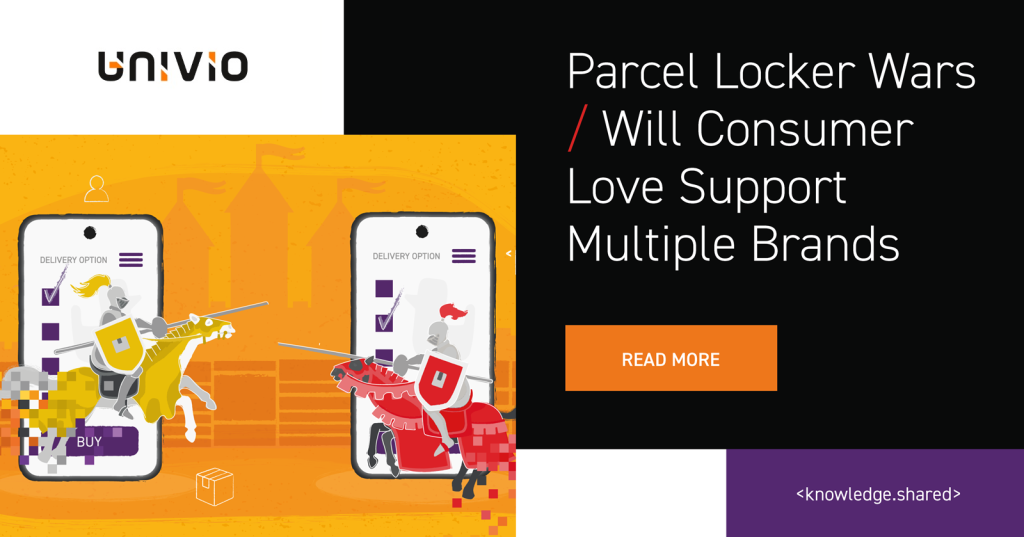
Earlier we mentioned inventory and order management – if you’re going to fully custom route, it’s entirely possible to choose a solution that covers an overlapping array of needs in these areas. ShipBob, for example, handles this as part of the wider order processing.
Marketplace Integration
In a true omnichannel strategy, you also need to consider channels outside of your own. Marketplaces play an important role in e-commerce businesses, allowing them to reach more customers by making their products available on popular sites.
This can most easily be done through integration. As we established at the start, most (if not all) the info you need in terms of product details and descriptions, is handled by the PIM module, while your order, inventory and fulfilment management tools can provide the smooth processing of real time operations. This way, with a little API magic, everything stays fully synchronized.
Of course, you’re at the mercy of what integrations are supported by each marketplace. Alongside API, tools such as Unilinker or Baselinker can provide the vital connections for smooth, two-way dataflow.
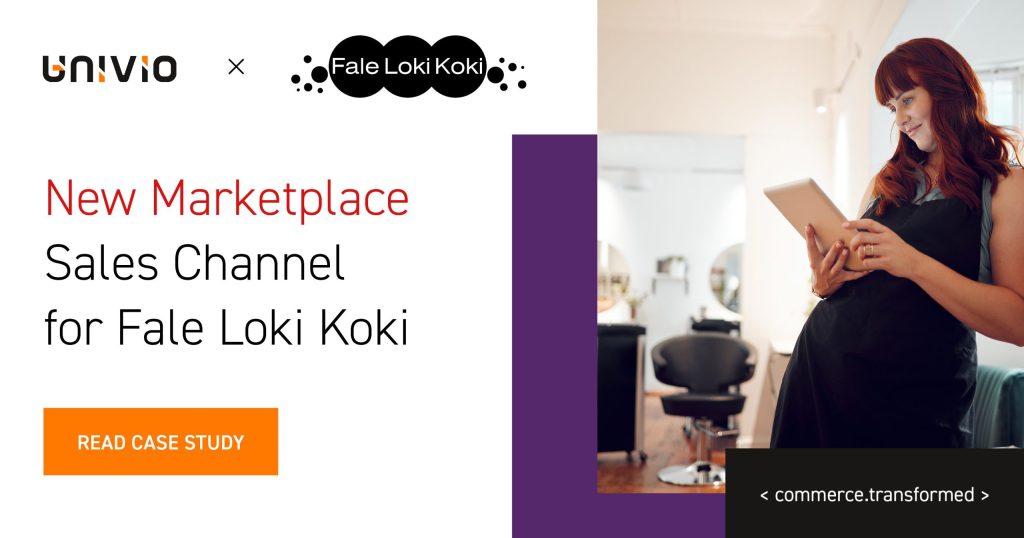
Personalization Engine
Implementing personalization, however, can be as complex as you desire. At its core, however, it involves connecting data sources with real-time session updates, and then converting collected data into analytics.
Commercetools, for example, recommends doing this by creating specific personalization rules, then tailoring the required modules. For example, if you wish to test different descriptions, this would need a PIM, while you could alternatively configure your homepage to showcase different products.
There are also tools like Optimizely or User.com specializing in off-page actions, such as personalized marketing and communication. We could go down the rabbit hole of options here, from marketing and advertising to unique discounts and geospecific personalization. But that’s a seperate topic, for another time.
Multilanguage Support
When going cross-border, there are two challenges that typically need to be faced: new languages and new currencies. Let’s start with the former.
If you have internal specialists to translate, then PIM and other tools on this list can effectively ensure the smooth distribution of new details. On the other hand, if this isn’t the case, Generative AI and translation tools open up a wide array of possibilities for real-time translation needs.

Multicurrency Support
Alongside new language challenges, cross-border operations often requires supporting a new currency, too.
If you would like to go with your business worldwide, you need to not only speak the language of your international customers, but also adapt to their monetary systems payment preferences. Nothing turns off a potential buyer faster than seeing prices in a currency they don’t recognize.
If you want the clients to click that “purchase” button, implementing advanced SaaS payment gateways, such as PayPal, Stripe, and Adyen ensure multi-currency support, consistency and updates, enabling the processing of various payment methods, typical for local markets.
To increase customer security related to foreign exchange risk, services such as Wise offer the ability to lock in exchange rates, mitigating the impact of currency fluctuations and providing a sense of certainty with market volatility.
CRM / CDP
When it comes to keeping track of customers, most companies turn to either a Customer Relationship Management (CRM) or a Customer Data Platform (CDP) depending on their specific needs. With Composable Commerce, this isn’t much different either.
Properly connected, such tools integrate data from various sources to build the complete view of individual customers. In some industries, such as in the B2B sector, where sales teams still play an active role, these are often used to communicate and track all developments, helping to maintain a Single Source of Truth.
Tax Management
Does anybody like doing taxes? 😊 Fortunately, tax management tools enable your business to automate processes related to tax calculation, generate invoices and tax reports, as well as comply with applicable tax regulations, especially when you sell on multiple markets in different countries.
Avalara, TaxJar, and Vertex are just a few of the tax management tools on the market. Most of these SaaS tools operate through API. While building custom solutions on your side is always an option, on larger markets, it requires a lot of work to keep up with any changes in tax regulations for every region you operate in so… it’s often better to let someone else take care of that for you.
SaaS or Not? / SaaS solutions – is it worth betting on them?
As you can see, there are a lot of functionalities to consider. And while using a market SaaS solution for each and every one is an option, we also need to consider the rapidly increasing costs of using so many licenses.
So, when do we use a SaaS and when do we use something more native? The biggest benefits of using a SaaS solution are:
- The lower initial costs vs creating something from scratch
- Quicker implementation time
- Scalability and flexibility
- Automatic updates
- Tech support
However, as a trade off, this leads to regular ongoing costs due to licenses, an inability to fully adapt the solution, and dependency on the provider.
…there is no easy answer here. Some solutions are absolutely critical for your operations, and relying on the support of another company will be a big boon. Others, however, could be replaced with custom solutions overtime, to remove ongoing costs.
In other words, while SaaS options enable you to get off the ground quicker, you can also embrace the modular approach of composable commerce and make the switch when things are more stable.
Additional Composable Tools & Technologies
Now that you’ve got a taste of some of the many modules available in composable commerce, let’s also consider the technologies and tools that go alongside them. After all, we need means to both interconnect these modules and ultimately present a coherent view to the shopper.
API Management
When it comes to keeping modules connected but still independent, API is magic glue of sorts. This is because well-managed API lets us:
- Control access to data in each module by authorizing and authenticating users
- Set limits on how much data can be used and how fast it flows
- Enable a clear data point (with documentation, of course!) for developers to easily connect with other modules
- Easily connect new modules
- Adjust or update modules – as long as the API doesn’t change, the wider system isn’t impacted
Design System
When we break down monoliths, we also need a means to update the frontend across a range of channels. For this, we can turn to a Design System – a set of modular components, ranging from brand colors to typography and even animations. This lets developers recall existing elements, or even built new components from smaller atoms. What’s more, to make a company wide change, you only need to update the Design System itself.
Cloud
Cloud solutions play an important role in Composable Commerce, enabling much of the architecture’s flexibility, scalability and efficiency. Cloud-native PBCs and microservices are essential: they enable businesses to both scale up and down according to individual demands, but also spread out across regions and keep performance high. This is also not limited to any one specific vendor, so if you’re already using Amazon Web Services (AWS), Microsoft Azure, or Google Cloud Platform (the “big three” cloud providers), such an approach is highly supported!
Navigating Composable Commerce: Key Components and Choices
In our exploration of Composable Commerce, we’ve highlighted crucial components shaping modern e-commerce but with countless options available, the choices made in selecting these components are paramount, driving innovation and success in the dynamic world of e-commerce.
By carefully selecting the right tools and technologies, businesses can unlock new avenues for growth, foster seamless integration, and ultimately, stay ahead of the curve in delivering exceptional customer experiences.
Finally, it’s also worth mentioning that this doesn’t need to be an overnight migration. If you already have a legacy or monolithic system, you can start by moving key services into a PCB or microservice, investing as much as you can until the migration is complete. So… don’t panic! 😊







